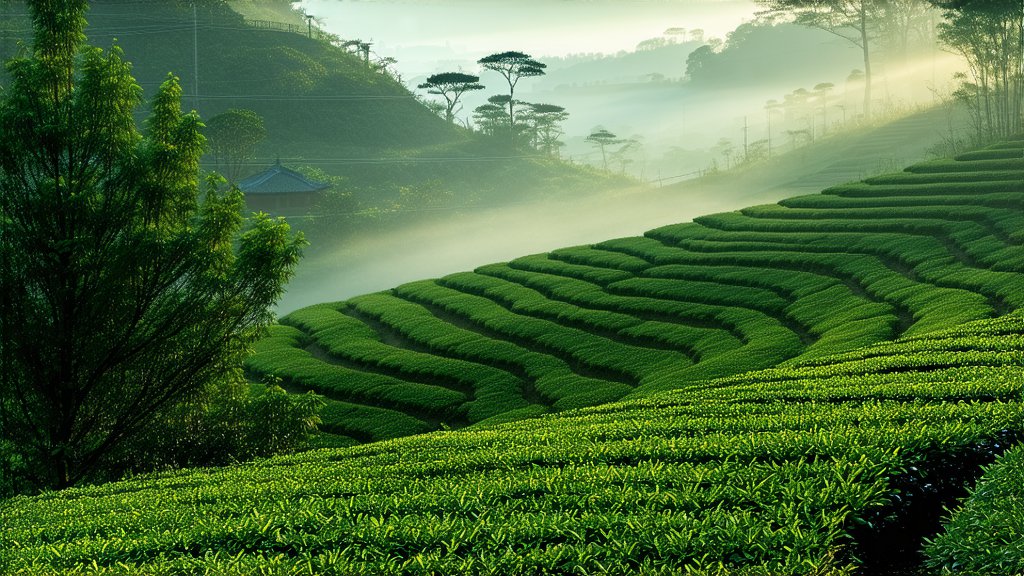
China, a land steeped in rich traditions and timeless customs, offers a treasure trove of cultural gems, among which its tea heritage stands out as a shining beacon. Among the myriad varieties that grace this ancient land, Tieguanyin, a premium Oolong tea hailing from the lush mountains of Anxi in Fujian province, holds a special place in both history and the hearts of tea connoisseurs worldwide. This article embarks on a journey through the captivating realm of Tieguanyin, exploring its historical roots, unique characteristics, intricate processing methods, and the art of its appreciation.
Historical Roots: A Legacy Etched in Time
Tieguanyin, often referred to as the "Fairy Iron Goddess" or "Iron Buddha," traces its origins back to the early Qing Dynasty (1644-1912). Legend has it that the tea was discovered by a poor scholar named Wei Yin who found an unusual wild tea plant growing beneath a Bodhi tree in Anxi. After brewing and tasting the leaves, he was astonished by their extraordinary flavor and aroma, believing it to be a divine gift. He propagated the plant and named it "Tieguanyin," symbolizing its resilience and purity. Over centuries, Tieguanyin evolved from a local curiosity into a globally recognized symbol of Chinese tea excellence.
A Symphony of Flavors: The Distinctive Characteristics
Tieguanyin is celebrated for its unique combination of floral fragrance and creamy texture, setting it apart from other Oolong teas. Its leaves are known for their distinctive ox-heart shape, with a deep green hue that hints at the depth of flavor within. When brewed, Tieguanyin unleashes a complex bouquet of scents, often described as a harmonious blend of orchid, magnolia, and sweet fruit notes, intertwined with subtle hints of roasted nuts and honey. The taste profile is equally enchanting – a smooth, buttery mouthfeel followed by a long-lasting, sweet aftertaste that lingers on the palate, inviting contemplation and another sip.
The Art of Crafting: From Leaf to Cup
The creation of Tieguanyin is an art form that requires meticulous attention to detail and a deep understanding of nature's rhythms. The process begins with careful selection of the finest leaves, typically harvested during the spring and autumn seasons when the climate is cool and humid, ideal for preserving the tea's natural oils and flavors.
-
Withering: Freshly picked leaves are spread out under the sun or in shaded areas to wither slightly, reducing moisture content and allowing enzyme activity to commence.
-
Fixation: This crucial step involves high-temperature heating (usually through pan-frying) to halt oxidation immediately, preserving the greenish hue and locking in the fresh aroma.
-
Rolling: The leaves are then rolled repeatedly to form tight spirals or beads, enhancing extraction during brewing and contributing to the tea's signature appearance.
-
Oxidation: Unlike green teas, Oolongs undergo partial oxidation, where the rolled leaves are allowed to oxidize briefly before being fixed again by heat. This step develops Tieguanyin's characteristic flavors and aromas.
-
Roasting: Finally, the tea undergoes multiple rounds of roasting to remove any remaining moisture and further refine its taste profile. Roasting levels can vary, influencing the final product's color, aroma, and taste.
The Ritual of Appreciation: Savoring Tieguanyin
To truly appreciate Tieguanyin, one must embrace the Gongfu tea ceremony, a traditional Chinese tea-making method that emphasizes precision, patience, and mindfulness. Here's a brief guide to experiencing this exquisite tea:
-
Preparation: Use a Yixing clay teapot or a Gaiwan (a lidded bowl), which helps retain heat and enhances the tea's flavors. Rinse the vessel with hot water to warm it up.
-
Leaf Quantity: For a 150ml pot, add about 5-7 grams of Tieguanyin leaves. More leaves can be added if a stronger brew is desired.
-
Water Temperature: Use near-boiling water (around 95°C/203°F) to extract the full range of flavors without scalding the delicate leaves.
-
Steeping Time: The first infusion is usually shorter, around 15-20 seconds, to 'wake up' the leaves. Subsequent infusions can be progressively longer, each revealing different facets of the tea's character.
-
Observation: Watch as the tightly rolled leaves unfurl gracefully in the hot water, releasing their essence. The aroma will fill the air, inviting anticipation.
-
Sipping & Savoring: Take small sips, allowing the tea to coat your tongue and savor its complexity. Pay attention to the evolving flavors from initial sweetness to mid-palate umami and the lasting finish.
In conclusion, Tieguanyin is not merely a beverage; it embodies centuries of Chinese culture, philosophy, and artistry. Each cup tells a story of the land, the people, and the timeless pursuit of harmony between man and nature. As you embark on your own journey with this enchanting tea, remember that every sip is an opportunity to connect with a rich heritage and experience a moment of tranquility in today's fast-paced world.